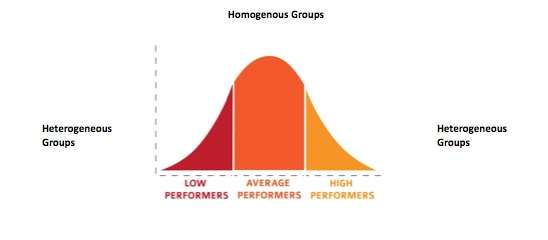ATD Blog
Reconciliation and Leadership?
Tue Apr 02 2013

Today, April 2, 2013 is National Reconciliation Day. You may be wondering what National Reconciliation Day has to do with Leadership. To “reconcile” means to settle or resolve, or to further elaborate, reconciliation is the act of getting two things to become compatible with one another (vocabulary.com). As leaders, it is our responsibility to create unity, even in the midst of chaos, to work with our teams, customers and vendor so that we can create a culture of compatibility.
Recently, I was working with a client who shared this quote with me - “… conflict is the primary engine of creativity and innovation. People don’t learn by staring in a mirror; people learn by encountering differences.” I loved this quote and it is fitting for this blog. As leaders, our job is to unite and sometimes reconcile people, but it is also to embrace, value, respect, and appreciate differences. It is in the differences that we learn, grow and ultimately increase profitability.
In the mid 80’s, Dr. Milton Bennett began to publicize his work on intercultural sensitivity. In Bennett’s research, he creates a framework for the different ways in which people react to cultural differences.
Since this blog is not about diversity, but rather about reconciliation, I will not go into the 6 stages created by Bennett. However, I would like to share an important discovery from his research that ties into our topic of leadership and reconciliation.
Below is a bell curve of team success based upon homogenous and heterogeneous groups.
I am sure you noticed that the heterogeneous groups (different - unlike in nature) show up in both the lowest performing group and the highest performing group. Homogeneous groups (of a similar kind – alike in nature) repeatedly fall in the average standard, even when the group members are more qualified than those in the heterogeneous groups.
According to Milton’s research, the one key difference that sets a heterogeneous group up for horrible failure or tremendous success was one key ingredient… leadership! A leader that is able to get different types of people to work together successfully, create a safe environment to share ideas, respect differences, value varying opinions and be open minded to the possibilities, is the leader who will move their team to the high performing end of the curve. This sounds a lot like the original definition of reconciliation I shared at the beginning of this blog.
Dr. Martin Luther King, Jr. said, “Forgiveness (Reconciliation) is not an occasional act, it is a constant attitude.” As leaders we have the opportunity everyday to bring people together, which often requires helping them overcome fears, prejudices, differing values and beliefs in order to grab a hold of a bigger picture - for the greater good of the organization… it is helping them to reconcile their differences. It is an attitude of reconciliation, as suggested by Dr. King; an attitude of appreciation, openness and working together that we should embrace as leaders. It is the right thing to do and the financial bottom line is definitely affected by it.
On this National Day of Reconciliation, I want to encourage you to think about how you can incorporate this blog into your everyday life as a leader, and make it a part of your best practices. As Thich Nhat hanh once said, “The practice of peace and reconciliation is one of the most vital and artistic of human actions.”
